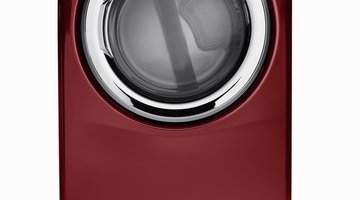How to Soundproof a Washing Machine
Washing machines make a lot of noise during routine use. If you have space between the appliance and the surrounding walls, then you risk the machine rocking and moving, which creates even more noise.

Covering the appliance with a blanket or using other soundproofing methods doesn’t work as well as noise vibration pads. The pads reduce the amount of noise produced by your machine.
Things You Will Need
- Screwdriver
- Noise-dampening tape
- Sound-absorbing foam
- Utility knife
- Duct tape
- Measuring tape
- Noise vibration pads
- Construction adhesive
- Rubber pad
Tip
Acoustic foam is another name for sound-absorbing foam.
-
Check the washing machine over carefully, looking for any loose panels. Screw the panels into place on the appliance. For damaged panels or panels missing screws, use noise dampening tape, running pieces of the tape along the edges of the panels.
-
Move the washing machine from its current location. Lay down a rubber pad or mat and place the washing machine on top. The rubber pad absorbs a small amount of noise produced by the washing machine as it hits the floor.
-
Cut the sound-absorbing foam into smaller pieces. Place the pieces of foam behind the washing machine and on the sides. Use foam in any space where you have a distance between the washing machine and a wall or cabinet. Small pieces of duct tape keep the foam from falling down.
-
Look at the bottom of the washing machine. The washing machine must sit flat against the floor without bumping or knocking against anything. If the floor is uneven, then use small pieces of sound-absorbing foam underneath, leveling out the machine.
-
Measure the sides of the washing machine and cut the noise vibration pads into sheets large enough for the sides. Apply a thin layer of the concrete adhesive to each side of the washing machine and press the pads against the sides.
The Drip Cap
- Washing machines make a lot of noise during routine use.
- For damaged panels or panels missing screws, use noise dampening tape, running pieces of the tape along the edges of the panels.
- The rubber pad absorbs a small amount of noise produced by the washing machine as it hits the floor.
- Look at the bottom of the washing machine.
References
Writer Bio
Jennifer Eblin has been a full-time freelance writer since 2006. Her work has appeared on several websites, including Tool Box Tales and Zonder. Eblin received a master's degree in historic preservation from the Savannah College of Art and Design.
Photo Credits
- Ryan McVay/Photodisc/Getty Images
- Ryan McVay/Photodisc/Getty Images
More Articles



